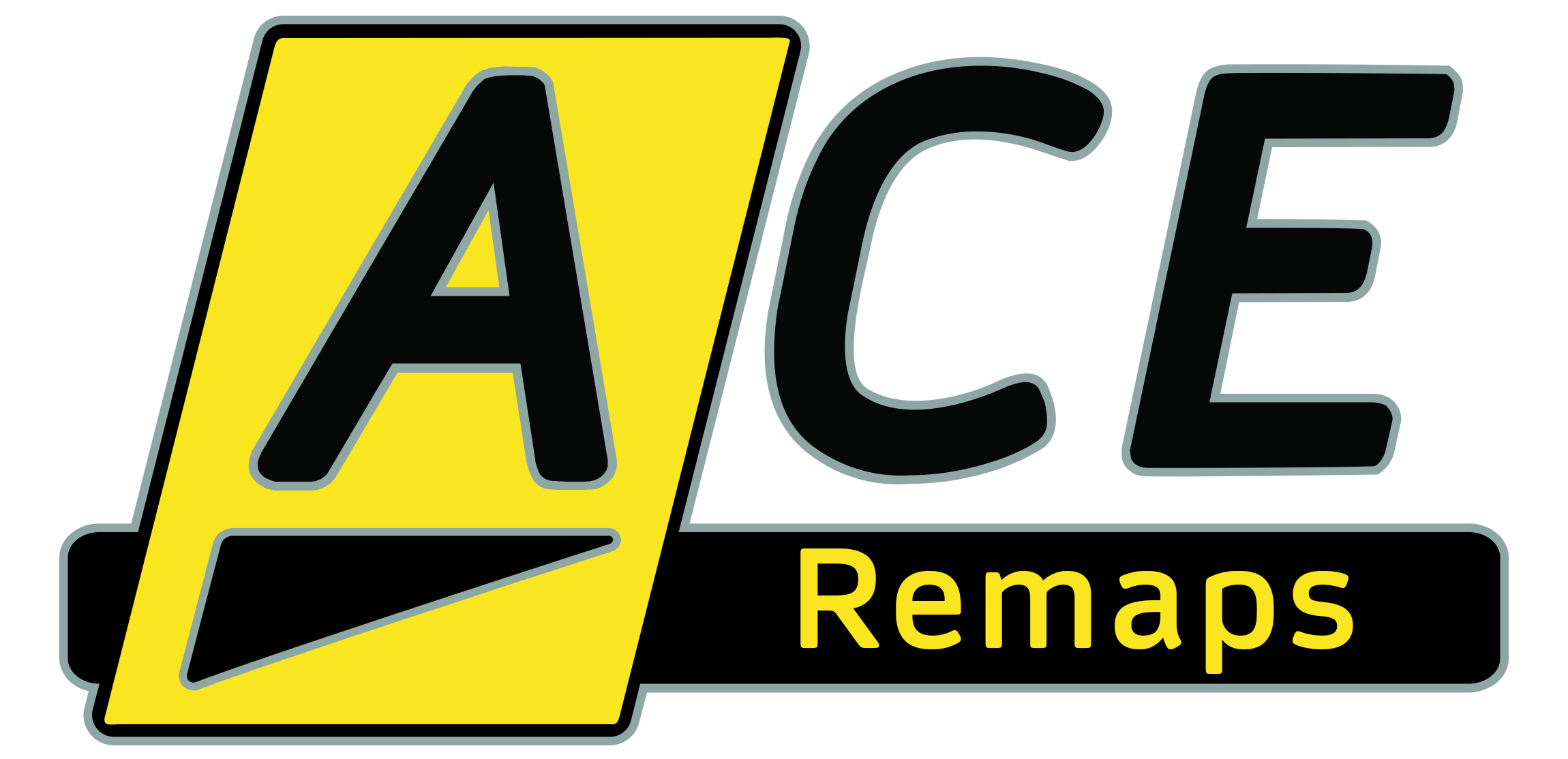Rolling Roads, Dynos & Remapping
A very common question we get asked is ‘Do you have a rolling road?’ or ‘Do you remap on a dyno?’ and there’s a lot of misinformation and misconceptions about the subject, so we’ve put together this guide to rolling roads, dynos, and rolling road engine tuning and dyno remapping, based on our own thoughts & opinions.
The guide is split up into sections which you can quickly jump to by clicking the quick links below (if you don’t want to read the whole guide from start to finish)
There are also links to the appropriate section of a video we’ve produced on YouTube in each of the sections below.
Are Rolling Roads & Dyno’s Different
The term Rolling Road is more of a nick-name for the equipment’s actual name, which is a dynamometer, or dyno as it is usually abbreviated.
The definition of a dyno from Wikipedia is as follows;
A dynamometer or “dyno” for short, is a device for simultaneously measuring the torque and rotational speed (RPM) of an engine, motor or other rotating prime mover so that its instantaneous power may be calculated, and usually displayed by the dynamometer itself as KW or BHP. (https://en.wikipedia.org/wiki/Dynamometer)
So it’s basically, equipment to calculate or measure the output of an engine from the rotational force of the wheels.
What’s the Difference Between a Rolling Road & a Dyno?
Are rolling roads and dynos different? In short, no. As we’ve already established, a rolling road is just another name for a dyno.
The main difference between the two terms is that a rolling road is usually associated with a rolling road being used for engine tuning purposes, i.e. to map or remap a car’s ECU (Engine Control Unit).
Whereas dyno is more often associated with using a dyno machine to simply test the power output of an engine without any engine tuning taking place.
However, both terms can be used interchangeably.
What Does A Rolling Road Look Like?
A rolling road generally looks like a large drum that the car’s wheels sit on top of, as seen in the image below;

The rolling road connects to the car via 4 leads coming off the machine, 2 of which go to each wheel and pick up a signal from sensors inside the wheels, so the machine knows how fast the wheels are going round.
The other 2 leads go to the car’s battery, so the rolling road can power any electrical equipment that needs to be used when mapping or testing the car, such as a laptop running specialist rolling road software.
What Is A Rolling Road Dyno
A rolling road dyno is a piece of equipment that enables the operator to attempt to replicate driving the vehicle on the road or track, but with the vehicle being stationary, usually in a workshop or somewhere similar, although there are also mobile dynos too.
It has ways to measure the forces put on the wheels/tyres/hubs (depending on the type of equipment) which then enable the operator to measure/calculate power and torque figures the vehicle’s engine is producing at the wheels and/or engine flywheel depending on the type of dyno.
Are All Dynos The Same
Not all dynamometers are the same.
The primary categories are engine dynos & chassis dynos, where engine dynos are connected directly to the engine (requiring it to be out of the vehicle), and chassis dynos take measurements from the vehicle’s wheels/tyres or directly from the wheel hubs.
Chassis dynos are the most common type of dyno (or rolling road), and there are several different types of chassis dyno including 2-wheel drive, 4-wheel drive, hub dynos, as well as motorcycle dynos
The most common rolling road dyno in use for ECU remapping is a 2-wheel drive chassis dyno, which uses rollers on which the vehicle’s wheels sit (& are strapped down) to measure the engine output.
Are The Results From A Rolling Road Accurate
This is a tricky one to answer because it’s both Yes and No!
If you took the readings from a good quality dyno, properly calibrated, operated by a fully trained/experienced operator, from a vehicle that was properly installed on the dyno, then yes, the results should be pretty accurate for that specific moment in time in that location.
The ‘No its not accurate’ answer is because if you took that same vehicle out onto the public road the day after the dyno run, you are highly likely to get a different result from that seen on the rolling road!
Why is that? Well let’s list the main factors other than the ECU map & engine setup which affect the power output & performance of a vehicle. Here goes….
- Air temperature
- Humidity
- Air density
- Volume & speed of airflow
- Engine & engine bay temperature
- Coolant efficiency & temperature
- Mechanical grip from tyres & dyno roller surface
- Fuel grade & quality
As you can imagine, a lot of these are likely to be totally different out on the road in comparison to inside a dyno cell, and they even change whilst the car is in the dyno cell, on the rolling road, giving different results over multiple runs, even on the same day.
How Do You Remap A Car On A Rolling Road
As mentioned previously, a rolling road is actually not used to remap a vehicle, it is only a ‘tool’ to measure the output of the engine (along with some other parameters), which should help the tuner/remapper to get a measured result from the changes made to the engine map, and enable them to optimise the settings.
The changes to the ECU settings (ie the remap) are still made using the specialist remapping equipment & software, which is connected to the ECU in most ‘normal’ vehicles like road cars, vans, 4×4s, motorhomes, etc through the on-board diagnostic port (OBD Port).
Sometimes these changes will be made whilst the vehicle is running on the rolling road, this is called live tuning, but in most instances, the remap will be loaded onto the vehicle whilst it’s not running & a before & after power & torque measurement will be taken from the vehicle to show the changes & improvements.
Whilst live tuning is good to extract the very best from the engine, there are drawbacks too, (see below) and for our own remaps, we don’t wish to extract the maximum from the engine which could reduce reliability & operating lifespan. We look for good, healthy, safe & reliable improvements, noticeable by the owner in everyday driving.
What Are The Benefits Of A Rolling Road Remap Or Tune
Using a rolling road to measure and optimise the effects & results of a remap has some major benefits.
Firstly, you can instantly get an actual measurement of the output of the engine, which would be almost impossible to get out on the public highway.
Also, there is usually a far more controllable & repeatable environment to carry out the testing & tuning in most dyno cells, although there are some limitations & issues (see below), overall it is much better for ‘normal’ vehicles than the public road.
Dyno runs can also be easily carried out (usually from low revs to peak revs in 3rd gear) on a rolling road, whereas on a public road, many vehicles would exceed the speed limit to do this, and would require a clear road with no traffic (ignoring the speed limit restriction) which is difficult to guarantee unless a private road was used/hired (which may not be practical or affordable).
What Are The Drawbacks Of Remapping On A Rolling Road
The main drawback of a rolling road is that it is an artificial environment, trying to replicate a ‘real life’ environment.
2 of the main areas where the vast majority of dynos fail to emulate the actual environment the vehicle will operate in (ie the road), which have a significant effect on performance, are heat & air.
- HEAT: When the vehicle is running on the dyno rollers, considerable heat is generated both inside & outside of the engine bay, and the more runs that are performed, the greater the temperatures get. When the temperatures rise, the ECU will adjust the fueling to try to compensate & less power will be produced.
Whilst the fans attempt to cool the engine & engine bay, they tend to recirculate hot/stale air and are also not as effective as driving on the road where there is a greater cooling effect, and more ‘fresh’ air.
- AIR: Rolling roads will use fans to blow air onto the vehicle to both attempt to cool it and to generate airflow into the induction system. Because in the vast majority of dyno cells, the fans run at a constant speed, this is totally different from reality, where airspeed increases & decreases with vehicle speed, forcing air into the induction system.
To illustrate this, when you drive on the road at 20mph, air naturally flows into the engine at 20mph, and as you accelerate, so does the natural airflow. When on a rolling road, the airspeed is at a constant speed no matter how fast the wheels & engine are turning.
Also out on the road, air flows over the whole of the vehicle, not just in the areas the fans are directed, resulting in a totally different air induction & engine cooling performance.
The rolling road environment is also less ‘real’ as the vehicle will be sitting higher off the ground, and often on axle stands which can unsettle the suspension & tyre contact patches.
Do You Need A Rolling Road To Remap A Car
You do not need a rolling road to remap a car.
A rolling road is a piece of equipment that measures the results & effects of a remap and doesn’t actually make changes to the ECU, just provides feedback to the tuner as to the effect of any changes that have been made to the ECU settings.
In fact, a rolling road is an equipment trying to replicate the actual road or track. The optimum way to measure the performance & effect of a remap is to operate it in the ‘real life’ environment in which it will be used.
So, the best place to develop a remap tune for a race car is on the track, and the best place for a ‘normal’ car, van or motorhome is on the road. The vehicles are then in the real-world environment where they will be performing.
It is very possible to develop a remap/tune using live data from the vehicle whilst it is being used on the road, although more difficult when trying to do this on a public road, as runs through gears, up to & above legal speeds are usually needed to test & measure the results of the remap
A rolling road can be used to ‘bench test’ a map/tune, but this is not an accurate way of measuring the effects of a remap as the rolling road environment is so different from reality. There are also many rolling roads that are not calibrated correctly, and this will give even more false readings.
So, in summary, you do not need a rolling road to develop or measure the results of a remap, although it can be used as a ‘bench test’. The best place to develop & measure the effects of a remap is in the real-world environment in which the vehicle will be used.
Is A Remap Better On A Rolling Road
For a ‘normal’ vehicle being used on the road, with no modifications or underlying issues, in our opinion – no.
The best maps are those that have been fine-tuned & optimised & properly time tested in the real environment in which they’ll actually be used, so for a remap on a ‘normal’ road vehicle, this fine-tuning & durability testing needs to take place on the roads.
A rolling road is an ideal tool to help develop a remap to the point of being ‘almost there’, but it doesn’t matter if it performs well on a dyno, if it doesn’t respond or perform well when you’re driving it to work or for pleasure, it’s not a great map!
So a rolling road is a tool to help quickly & safely, but only partially develop a great remap. The development needs to be completed in a real-world environment.
Who Might Consider Using A Rolling Road For A Remap
If your vehicle is high-performance, or you are a track-day or race enthusiast and your car spends most of its life on the track, then it might make sense to use a rolling road to help develop your remap.
The rolling road can be used to develop the remap to get significant performance improvements from the engine, as well as develop into the remap other modifications that can help boost how your engine performs.
Should I Get A Rolling Road Dyno Test Before Or
In Conclusion
A rolling road dyno is a tool that can help with the developing & measuring of a remap/tune, but it is not an essential piece of equipment, and in our opinion, the best place to develop & test a map is in the real-world environment in which it will actually be used.
If you’d like to get a quote for your vehicle and find out what your engine’s truly capable of, just click here and we’ll send you performance improvements, costs, and other useful information.




